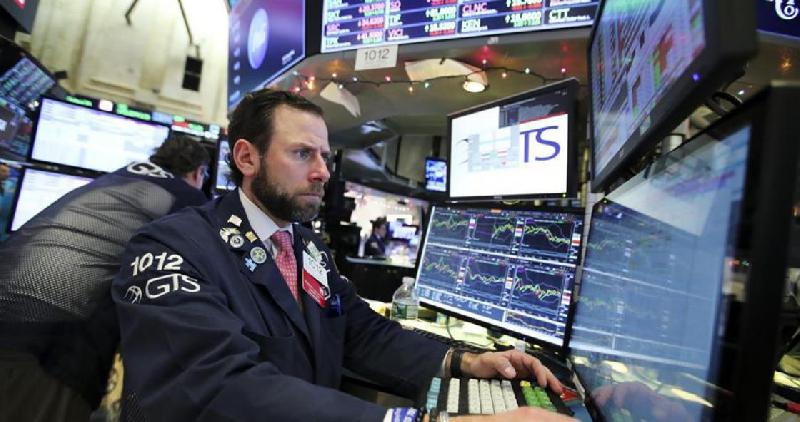
U.S. stocks took a heavy beating with broad losses on Thursday, in the wake of Apple's dire slash of its first-quarter revenue forecast and weaker-than-expected economic data.
After the closing bell, the Dow Jones Industrial Average plunged 600.02 points, or 2.83 percent, to 22,686.49. The S&P 500 slumped 62.14 points, or 2.48 percent, to 2,447.89. The Nasdaq Composite Index plummeted 202.43 points, or 3.04 percent, to 6,463.50.
Shares of Apple dived nearly 10 percent at the end of the trading day, weighing down the embattled Dow by more than 300 points and posting its biggest single-day loss in six years.
Apple revised revenue forecast in the first quarter in fiscal 2019 lower to 84 billion U.S. dollars, CEO Tim Cook announced in a letter to investors late Wednesday.
The figure, a marked decline from a previous guidance of a range of 89-93 billion U.S. dollars, was the first forecast shortfall in more than 15 years.
The figure is also much lower than the estimated 91.3 billion dollars by analysts, according to statistics gathered by U.S. financial data provider FactSet.
Cook attributed most of the company's guidance on revenue shortfall to declining sales across iPhone, Mac and iPad.
The revenue forecast move has also pushed for uplifts in the U.S. dollar due to its safe-haven function for risky assets buyers, which posed headwinds for U.S. companies around the world.
"Weakness in emerging market (EM) currencies, such as India's, Turkey's and Russia's, also weighed on sales and forced Apple to raise prices, curbing demand. This could have broader implications for U.S. firms with outsized EM revenue," UBS Global Wealth Management said Thursday in a research note.
"While we remain overweight global equities due to continued growth in the global economy and attractive valuations, the disappointing news from Apple underlines the need for investors to hold countercyclical positions," the research team said.
Nine of the 11 primary S&P 500 sectors fell, with the information technology sector down more than 5 percent, leading the laggards. The industrial sector ranked the second with a drop of nearly 2 percent.
Apple's forecast cut also weighed down companies heavily dependent on global operations. The S&P 1500 Airlines index dropped 5.5 percent.
Shares of Delta Air Lines and Boeing dropped roughly 8.9 percent and 4 percent respectively, leading the laggards.
On the economic front, investors have digested downbeat data relating to U.S. economy, fueling nervousness over ebbing economic activities in the new year.
The ISM manufacturing index dipped to 54.1 in December, its lowest level since November 2016, which was weaker than market expectations and down from 59.3 in November, according to the latest report.
The index, issued by the Institute for Supply Management (ISM), is widely considered as an indicator for the expansion pace of economic activity in the manufacturing sector. The U.S.-based ISM is the world's largest not-for-profit supply management association.
"Comments from the panel reflect continued expanding business strength, but at much lower levels. Demand softened, with the New Orders Index retreating to recent low levels," said Timothy Fiore, chair of the ISM Manufacturing Business Survey Committee, in the report.
U.S. labor market remains teetering to maintain its strength with both rising weekly jobless claims and private payrolls.
The number of Americans applying for unemployment benefits reached 231,000 with a seasonally adjusted increase of 10,000 for the week ending Dec. 29, said the Labor Department on Thursday.
Offsetting the worrying impact, private payrolls rose by 271,000 jobs in December, which indicates new positions in private firms and is higher than the November increase of 157,000, according to the ADP National Employment Report on Thursday.























Latest comments